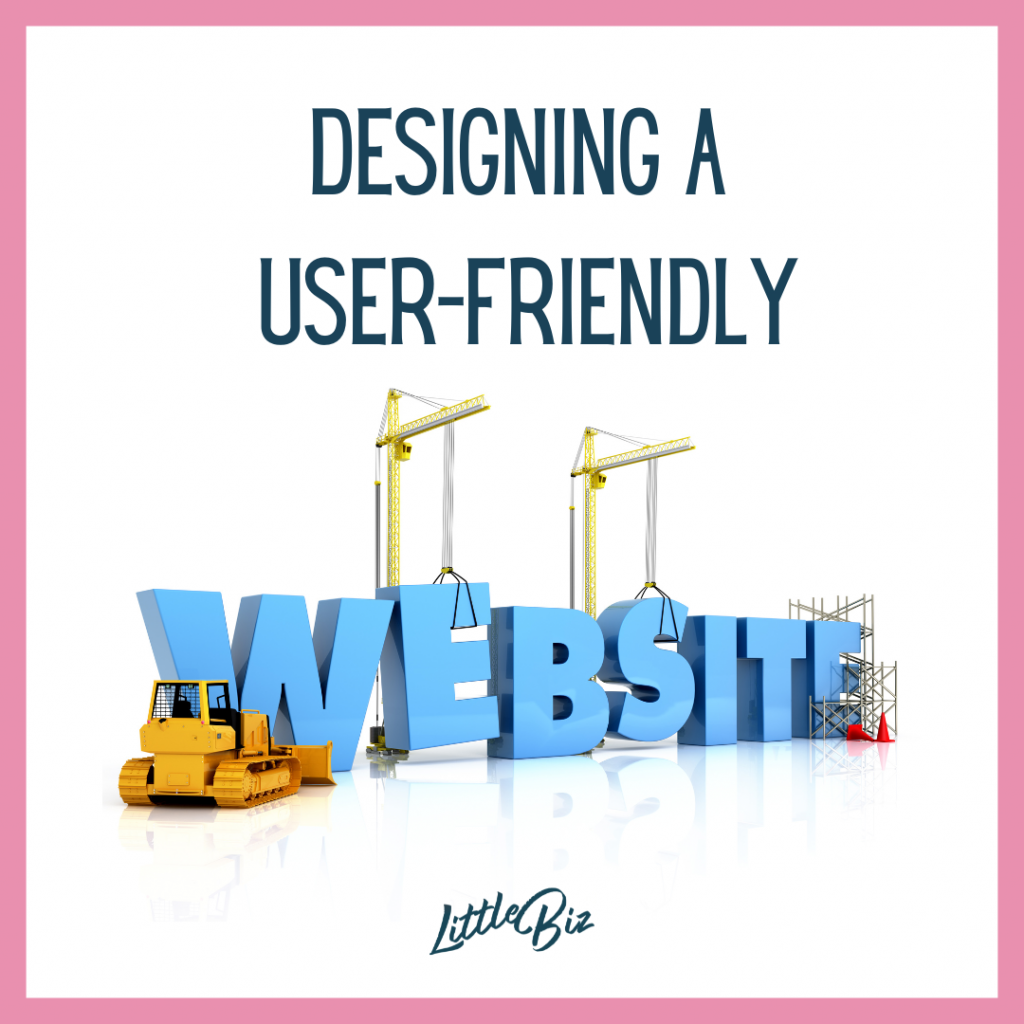We are talking about websites this month, and I thought it would be super handy to give you a checklist for designing a user-friendly website, so here it is!
- Start with the end in mind
When we start with the end in mind it makes it much easier to know what you want to achieve through your website. What goals and objectives do you have for your website? How do you want them to use the website and how do you want them to move through the website. Think about contact points and what they may want to do after each section – think call to actions (CTA’s) and the next step you want them to make. - Know your audience
Your audience will determine how your website looks and feels, and the journey they will take through your website. If you research your target market and the expected visitors to your website, you will have a better understanding of their needs, preferences, and behavior patterns. - Make it easy to navigate
There is nothing worse than trying to navigate a website that has a load of information, but it is hard to access. Ensure you organise your content in a logical, intuitive way and use clear and descriptive headings. - Keep it simple and clean
I love the use of clean and simple design elements. It helps to avoid the website feeling cluttered and assists your visitor to travel the website in a clear and easy way, without getting distracted along the way. - Make it mobile-friendly
Ensuring that your website is mobile friendly means that you have optimised the pages to display nicely on mobile devices. Websites that haven’t been optimised for mobiles will often display terribly and will cause high bounce rates as website visitors find the information or services they want with a website that gives them a good user experience. Testing the mobile responsiveness on different screen sizes and devices is also suggested. - Optimize for speed
Make sure your website loads quickly, as slow loading times can lead to a high bounce rate. This can mean using image compression plugins or website delivery via a CDN (content delivery network), but the best practice is to keep your website as lean as possible, using the plugins you need, uploading images in a smaller file size and using a video hosting platform and embedding your videos on the page, rather than uploading large videos to your website, which will cause slower loading times. - Use high-quality images and videos
Use the highest quality images and videos you can, whilst also keeping them sized appropriately (as above) to help illustrate your message and keep visitors engaged. Grainy images will not fly in today’s digital marketing era. - Make it easy to find information
Keep your navigation menu’s easy to use and straightforward, use clear headings through your text, and name your pages / posts appropriately. If you have a lot of content, perhaps include search functionality on your website to make it easier for your website visitors to find the information they are looking for. - Make it accessible
Ensure that your website is accessible to users with disabilities and meets web accessibility standards. - Test, test, test
Always keep an eye on your website for any formatting issues that may arise with updates that are run. As you are building your website make sure you are testing your website on different devices, browsers, and screen sizes. Ask some trusted people for some user feedback, this makes it much easier to know where you need to make improvements on your website.
So there you are, 10 things for designing a user-friendly website. Feel free to join our discussions on our Facebook Page to let us know if you have found these tips helpful, or other tips you may have.


Great advice! I didn’t realise you can host photos as well as videos on a different platform so going to be looking into this!! Thanks so much 🥰
Thanks for your encouragement. I was referring to video hosting like Youtube and Vimeo, I’m not sure if there is external image hosting also as I’ve never needed to host large image files.